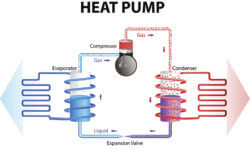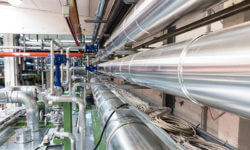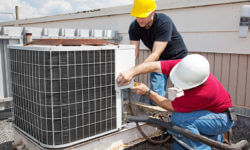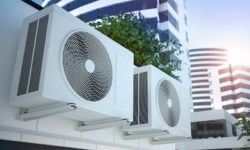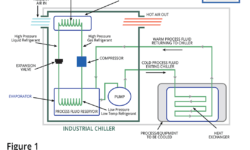Geothermal systems work similarly to other HVAC structures. However, there is one major difference. Geothermal systems use the ground rather than air to absorb or release heat. So, if you are considering installing a geothermal heat pump (GHP) system for your facility or business, pay close attention. Here are five things you need to know about geothermal systems.
Read more →According to a study by the U.S. Department of Energy, HVAC systems are the largest users of energy in commercial buildings. That being said, the cost of running your building’s HVAC system will be among your greatest expenses, so it’s important to carefully select the components of your HVAC design.
Read more →As the world develops and grows, so does the need for proper climate control for commercial HVAC systems. New, original architectures pop up seemingly overnight, and with them comes another huge challenge. So, how are people supposed to manage climate control in uniquely-shaped and wholly different buildings, the likes of which they’ve never seen before?
Read more →Nowadays we spend a lot of time indoors. According to the EPA, it’s actually 90% of our time, on average. Between our jobs and home, indoor air quality is important to our health. That is why at The Severn Group, we know commercial air duct cleaning is a must through Maryland and Washington, D.C. office buildings.
Read more →When it comes to commercial restaurant HVAC, restaurant owners cannot be too complacent. They cannot risk forgoing preventative maintenance service for their HVAC systems, and always need to make sure it’s in good, working order.
Read more →Around since the late 1880s, ceiling fans have become a staple in U.S households. It was one way to make rooms more comfortable. They lost a bit of popularity in the 50s as airconditioning came to our homes. However, in the 1970s during the energy crisis, they made a comeback. To this day, they still remain in demand and a common household fixture. Yet, with technology today, what are the benefits of ceiling fans? Do we actually need them? Read on to find out.
Read more →As a commercial building owner, replacing your air conditioning system is likely not on the top of your to-do list. But, there are plenty of telltale signs that indicate when it’s time to do so. Plus, putting off the purchase of a new unit could prove to be more costly in the long run. Here’s a look at the top four reasons to replace your AC.
Read more →When choosing which HVAC system to install, it can be difficult to navigate your options. There are too many systems on the market to count. However, understanding the four major types of commercial air conditioning units may help you make an informed decision. We break down each of them below.
Read more →Owners of R-22 cooling systems in the United States will soon have to make some changes. On January 1, 2020, the production and import of R-22 refrigerant will become illegal. This is going into effect to further protect the environment and the ozone layer. But, what does this mean for your HVAC system? And what will your options be? Here’s an overview of what you should know.
Read more →Chillers do exactly what the name says – cool things down. In fact, chillers are necessary across a wide range of applications. But, how does a chiller work? In short, they prevent overheating and keep products cool to avoid harm to your machinery and bottom line. Here, we’ve broken down the elements of chillers and how they work.
Read more →